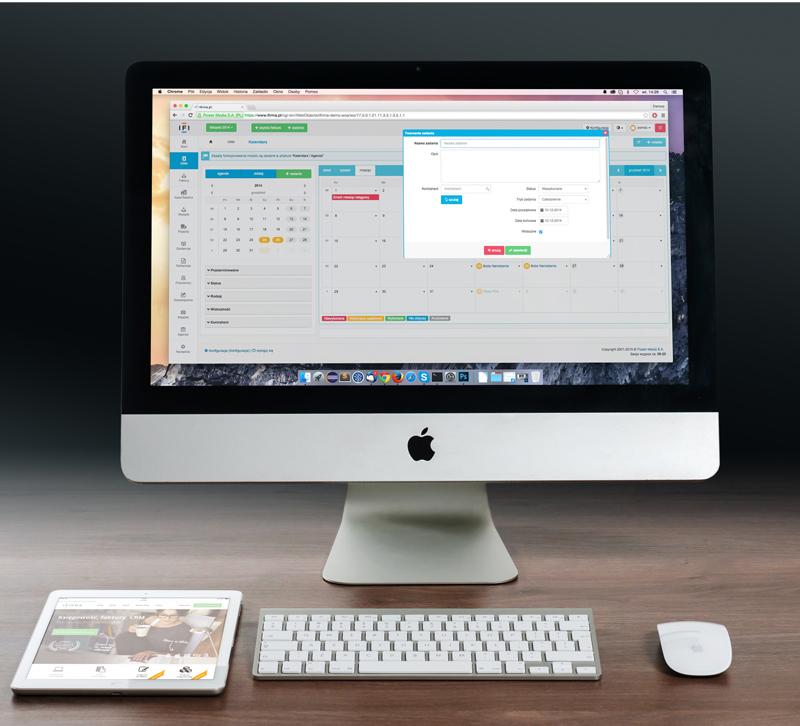In the home design industry, trends come and go over the course of a few market seasons. Website design follows a similar pattern. As Google updates its algorithms every year or so and web users develop new online habits and expectations, website design trends change and evolve. Need proof? Just take a look at websites from 2005 and compare them to today's sites.
Having an older looking or flat-out dated website hurts you in two ways. First, Google algorithms may be penalizing your website if your design isn't meeting their criteria. Google's goal is to direct users to well-designed websites that are best suited to meet the searcher's needs, so it prioritizes websites that are user-friendly. Second, users are quick to judge a poorly functioning website. If they have trouble with navigating or slow loading times, they will log off and probably never come back.
You may not need to update your website's design every year, but if you've been using the same design for three or more years, it may be time for a refresh. Here's how to know if it's time for a website design refresh.
Your website isn't responsive
Time for an experiment: Take out your mobile device and pull up your website on your browser. What does your site look like on a small screen? Does the page adjust to fit the small screen, or do you have to zoom in to be able to read it well? If you have to zoom in, then your website is not responsively designed.
Responsively designed websites adjust to fit any screen, whether that's desktop, phone or tablet. The images aren't cut off, and the user can navigate easily around your site without worrying the buttons being too small. In more technical terms, these websites are designed so that they have just one design instead of three designs like most unresponsive sites. This means the Google's spiders only have to crawl one site as opposed to three (one designed for each screen size) in order to properly categorize and understand your site.
Google prioritizes responsively designed websites because more than 50 percent of searches are done on mobile devices — most of which have varying screen sizes. In keeping with Google's commitment to creating a good user experience, the search engine pushes up websites that are user-friendly, so if that's not your website, you may be pushed down below your competitors.
Your loading time is too slow
Google says the average mobile user will wait three seconds for a website to load before clicking back and abandoning it. That may not be true for every consumer, but you don't want to take that chance and lose too many customers.
There could be a number of things that are slowing your loading times. It might be that your server is too slow, which often happens when you purchase a cheap site from a web host who has you sharing a server with other sites. While there's usually no such thing as too much traffic on your website, it can slow your site down if you don't have the server capacity.
Other reasons include an outdated content management system (if you're using Wordpress, for example, and haven't updated the software when prompted), too many images and too many plugins.
You can check your website's loading time here. If your site is too slow, then it's definitely time for a website refresh.
Your information is outdated or hasn't been rewritten in years
Most showrooms and designers have an About, Contact or Who Are We section on their websites to help potential customers learn a little more about them. On the whole, these are static pages, but if you haven't updated yours in a while, it may be time to edit the page.
Here are a few quick edits to do:
- Update all the information. Take out anything that no longer applies to your business.
- Include a newer photo of your showroom or staff or add a few additional photos of events or holiday open houses.
- Re-write the page completely. Sometimes starting over can be refreshing for you and your customers.
- Incorporate localized keywords (like "furniture showroom Indianapolis") into your text to help your page rank higher in local searches.
These little refreshers can have a big impact on your SEO if you're trying to rank higher in search results.
Your colors and fonts don't match your other marketing materials
Consumers identify brands by color, and when they associate colors with certain brands, they feel disjointed by a different color combination. For example, if you saw a McDonald's logo with any colors other than red and yellow, you'd be a little confused, right?
The same goes for your own brand. If you're using blue and white in your logo and newsletters, then you should use it on your website as well. Your colors and fonts should be the same across all marketing materials, so if you're using conflicting colors, now would be a good time to get them all on the same page.
Your content isn't optimized
When something is optimized, it just means that it is able to be crawled and indexed by Google's spiders so that it will appear in the correct or intended search results. There isn't just one thing to do to optimize a website. Rather, it involves doing a number of little things in order for Google to understand what your website is about.
Content is just one aspect of a website to be optimized, and if you're not a web designer, it's the easiest to update. By using keywords in your page title, headlines and bodies as well as adding alt text to your images, you can optimize your content to make it easier for Google to crawl it.
This can be a long process, especially if you have a lot of pages, so if you're not using keywords on all your pages, then it's time to sit down for a website design refresh.
Your website is your best marketing tool and your first impression for most consumers. Give them the right impression and update your website.
Does your site need a refresh? How do you handle it? Share with us in the comments!
Photo: Pexels







